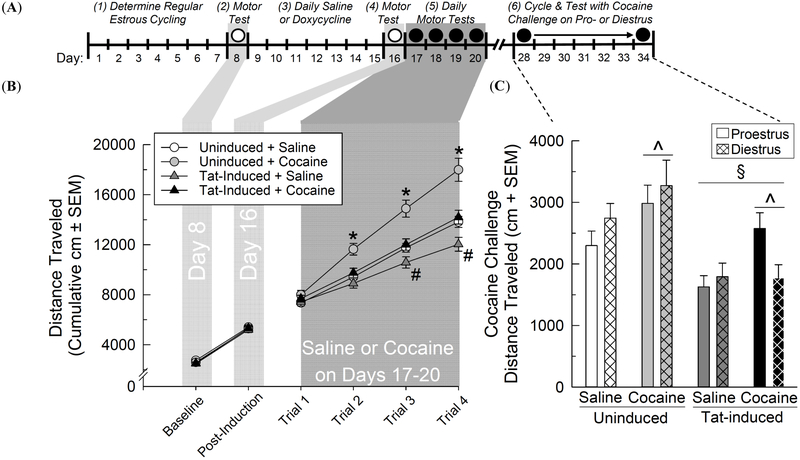Fig. (3).
(A) Time-course schematic of cocaine locomotor sensitization experiment. GT-tg mice had their estrous cycle tracked (days 1-7). Baseline motor behavior was assessed in an open field (open circle; day 8). Mice received control saline (0.9%, i.p.) or had central HIV-1 Tat protein induced via administration of an optimal doxycycline dose (100 mg/kg, i.p.; days 9-15). Motor behavior was assessed following induction (open circle; day 16). Mice were tested daily for locomotor response to saline or cocaine (10 mg/kg, i.p.; closed circles, days 17-20). After one week, locomotor response to a cocaine challenge was assessed amongst all groups on the next occurrence of proestrus or diestrus (whichever occurred first over days 28-34). (B) The cumulative distance traveled (cm ± SEM) in an open field among uninduced or Tat-induced GT-tg female mice (n = 16/group) administered saline and/or cocaine. * significant interaction wherein uninduced mice exposed to cocaine differ from other groups. # significant interaction wherein Tat-induced controls differ from other groups, (repeated measure ANOVA, p < 0.05). (C) The total distance traveled (cm + SEM) in an open field after a cocaine challenge when saline- or cocaine-exposed mice (n = 8/group) were on diestrus or proestrus. ^ significant main effect for cocaine-exposed mice to differ from saline-exposed controls. § significant main effects for Tat-induced mice to differ from uninduced controls, (three-way ANOVA, p < 0.05).

